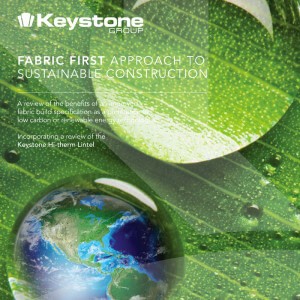Keystone has published an independent Fabric First Whitepaper exploring the benefits of an improved building fabric as a preference to low carbon or renewable energy technologies.
The research paper which was conducted by AES Sustainability Consultants provides a detailed overview of current policy and research on energy conservation and reduction of CO2 emissions. This document demonstrates that a ‘fabric first’ approach can achieve improved CO2 reductions most efficiently.
The introduction of Fabric Energy Efficiency standards into Part L of the building regulations intended to “discourage excessive and inappropriate trade-offs…for example poor insulation standards being offset by renewable energy systems with uncertain service life spans”. NHBC Foundation research also supports this view, with a 2013 report stating “the most robust way to minimise energy use is through the building fabric. Getting the fabric right will save energy for the whole life of the dwelling” Renewable technologies, on the other hand, have a limited lifespan and risk a significant increase in CO2 emissions from a development once they reach end of life, if not replaced at significant cost to the homeowner.
The findings included in the paper purport that a fabric First approach is found to be technically, environmentally and economically more viable than the installation of low carbon and renewable energy technologies.

